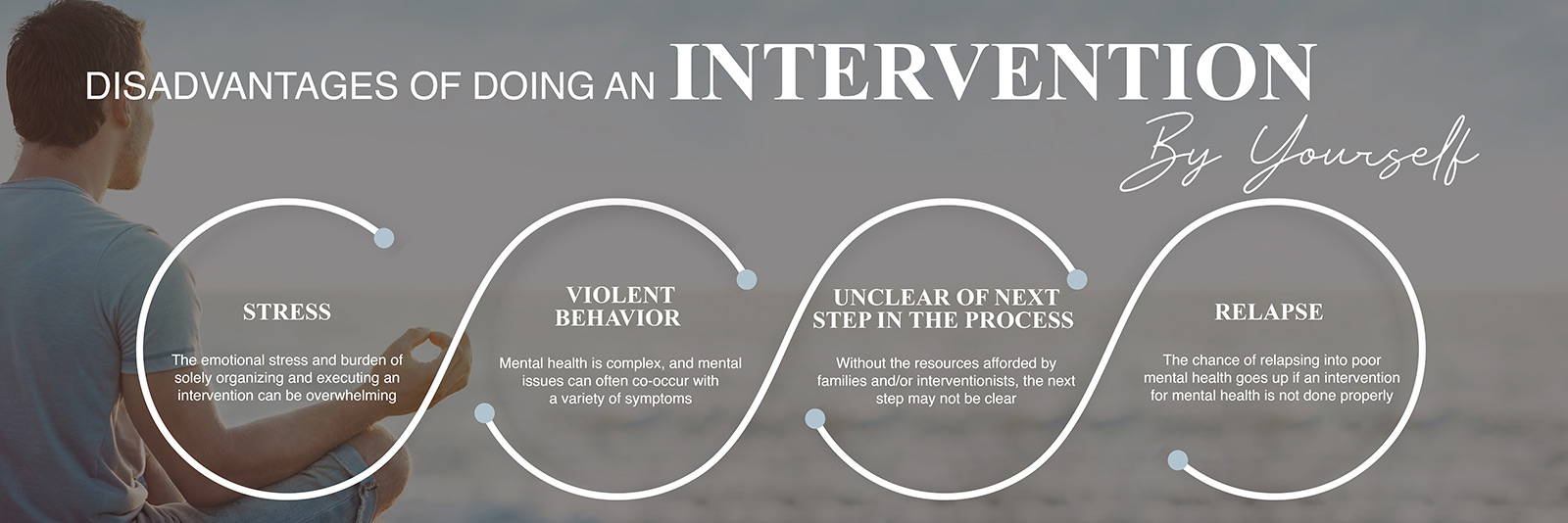[et_pb_section fb_built=”1″ next_background_color=”#000000″ _builder_version=”4.14.6″ _module_preset=”default” background_enable_color=”off” background_enable_image=”off” parallax=”on” parallax_method=”off” width=”100%” module_alignment=”center” custom_margin=”||||true|true” custom_padding=”40px|20px|20px|20px|false|true” bottom_divider_style=”none” bottom_divider_height=”36px” global_colors_info=”{}”][et_pb_row make_equal=”on” custom_padding_last_edited=”on|phone” _builder_version=”4.14.6″ _module_preset=”default” background_image=”https://amfmtreatment.com/wp-content/uploads/2022/02/hero-sec-1.jpg” width=”100%” max_width=”1200px” height=”300px” custom_padding=”60px||60px||false|false” custom_padding_tablet=”” custom_padding_phone=”0px||20px||false|false” locked=”off” global_colors_info=”{}”][et_pb_column type=”4_4″ _builder_version=”4.9.5″ _module_preset=”default” vertical_offset=”0px” custom_css_main_element=”margin: auto” global_colors_info=”{}”][/et_pb_column][/et_pb_row][/et_pb_section][et_pb_section fb_built=”1″ disabled_on=”off|off|off” module_class=”reverse” _builder_version=”4.14.6″ _module_preset=”default” background_enable_color=”off” background_enable_image=”off” parallax=”on” parallax_method=”off” width=”100%” module_alignment=”center” custom_margin=”||||true|true” custom_padding=”20px|20px|5px|20px|false|true” bottom_divider_height=”36px” global_colors_info=”{}”][et_pb_row column_structure=”2_3,1_3″ make_equal=”on” custom_padding_last_edited=”on|phone” module_class=”reverse” _builder_version=”4.14.6″ _module_preset=”default” width=”100%” max_width=”1200px” custom_padding=”0px||0px||false|false” custom_padding_tablet=”” custom_padding_phone=”0px||0px||false|false” global_colors_info=”{}”][et_pb_column type=”2_3″ _builder_version=”4.9.5″ _module_preset=”default” vertical_offset=”0px” custom_css_main_element=”margin: auto” global_colors_info=”{}”][et_pb_text _builder_version=”4.14.6″ _module_preset=”default” text_text_color=”#FFFFFF” header_font=”GFS Didot|600||on|||||” header_font_size=”25px” header_letter_spacing=”2px” header_line_height=”35px” custom_margin=”||10px|||” locked=”off” global_colors_info=”{}”]
mental health intervention guide
[/et_pb_text][et_pb_text _builder_version=”4.14.6″ _module_preset=”default” text_font=”helvetica-regular||||||||” text_text_color=”#000000″ text_font_size=”20px” text_line_height=”30px” header_text_color=”#000000″ custom_margin=”||15px||false|false” locked=”off” global_colors_info=”{}”]
Interventions can save you and your loved one’s life. However, interventions take planning, commitment, and more. Learn more here.
[/et_pb_text][et_pb_text _builder_version=”4.14.6″ _module_preset=”default” text_font=”helvetica-regular||||||||” text_text_color=”#000000″ text_font_size=”16px” text_line_height=”24px” header_text_color=”#000000″ custom_margin=”||15px||false|false” locked=”off” global_colors_info=”{}”]
The information below is presented as a generalized and educational overview. The specific details of treatment protocols mentioned in this article may not reflect the protocols utilized by A Mission for Michael.
If you would like to learn more about AMFM’s individualized programs to aid those struggling with mental health disorders, please reach out.
We look forward to hearing from you: (844) 993-2217
[/et_pb_text][et_pb_text module_id=”toc1″ _builder_version=”4.14.6″ text_font=”helvetica-regular||||||||” text_text_color=”#000000″ text_font_size=”16px” text_line_height=”26px” header_font=”GFS Didot|||on|||||” header_text_color=”#000000″ header_letter_spacing=”2px” header_2_font=”GFS Didot|700||on|||||” header_2_text_color=”#000000″ header_2_font_size=”25px” header_2_line_height=”35px” background_color=”#f9f9f9″ custom_margin=”||||false|false” custom_padding=”20px|20px|20px|20px|true|true” global_colors_info=”{}”]
WHAT IS AN INTERVENTION?
A mental health invention involves a gathering of family and friends with the common goal of discussing treatment options for an individual’s mental illness or trauma. Typically, an intervention is used because an individual is unwilling or in denial about their mental disorder. A successful intervention can open up avenues for treatment for mental disorders and establish a support system for those that need help.
[/et_pb_text][/et_pb_column][et_pb_column type=”1_3″ _builder_version=”4.9.5″ _module_preset=”default” global_colors_info=”{}”][et_pb_text ol_position=”outside” ol_item_indent=”10px” disabled_on=”on|on|off” module_class=”toc” _builder_version=”4.14.6″ text_font=”helvetica-regular||||||||” text_line_height=”24px” ol_line_height=”2em” header_font=”GFS Didot|||on|||||” header_text_color=”#FFFFFF” header_3_font=”GFS Didot|||on|||||” header_3_text_align=”center” header_3_text_color=”#FFFFFF” header_3_font_size=”20px” background_enable_color=”off” custom_margin=”||20px||false|false” custom_padding=”15px||||false|true” custom_css_main_element=”background-color:#333!important;” locked=”off” global_colors_info=”{}”]
Table of Contents
- What is an Intervention?
- Fundamentals of Intervention
- Intervention Methods
- Typical Intervention Process
- How To Hold a Successful Intervention?
- What To Expect In Intervention?
- Advantages Of Using A Professional Interventionist
- Disadvantages of Doing an Intervention by Yourself
- Resources
[/et_pb_text][et_pb_text ol_position=”outside” ol_item_indent=”10px” disabled_on=”off|off|on” module_class=”toc-tab” _builder_version=”4.14.6″ text_font=”helvetica-regular||||||||” text_line_height=”24px” ol_line_height=”2em” header_font=”GFS Didot|||on|||||” header_text_color=”#FFFFFF” header_3_font=”GFS Didot|||on|||||” header_3_text_align=”center” header_3_text_color=”#FFFFFF” header_3_font_size=”20px” background_enable_color=”off” custom_margin=”||20px||false|false” custom_padding=”15px||||false|true” custom_css_main_element=”background-color:#333!important;” locked=”off” global_colors_info=”{}”]
Table of Contents
- What is an Intervention?
- Fundamentals of Intervention
- Intervention Methods
- Typical Intervention Process
- How To Hold a Successful Intervention?
- What To Expect In Intervention?
- Advantages Of Using A Professional Interventionist
- Disadvantages of Doing an Intervention by Yourself
- Resources
[/et_pb_text][/et_pb_column][/et_pb_row][/et_pb_section][et_pb_section fb_built=”1″ disabled_on=”off|off|off” _builder_version=”4.14.6″ _module_preset=”default” custom_margin=”0px||||false|false” custom_padding=”20px|20px|20px|20px|true|true” global_colors_info=”{}”][et_pb_row column_structure=”2_3,1_3″ disabled_on=”off|off|off” module_class=”reverse” _builder_version=”4.14.6″ _module_preset=”default” width=”100%” max_width=”1200px” custom_margin=”||||false|false” custom_padding=”20px||40px||false|false” global_colors_info=”{}”][et_pb_column type=”2_3″ _builder_version=”4.9.5″ _module_preset=”default” global_colors_info=”{}”][et_pb_text admin_label=”Dangers of Using Adderall and Alcohol” module_id=”toc2″ _builder_version=”4.14.6″ text_font=”helvetica-regular||||||||” text_text_color=”#000000″ text_font_size=”16px” header_font=”||||||||” header_text_color=”#000000″ header_letter_spacing=”1px” header_2_font=”GFS Didot|700|||||||” header_2_text_color=”#000000″ header_2_font_size=”25px” header_2_letter_spacing=”2px” header_2_line_height=”35px” header_3_font=”|600|||||||” header_3_text_color=”#FFFFFF” header_3_font_size=”25px” background_enable_color=”off” custom_margin=”||||false|true” custom_margin_tablet=”0px|0px|0px|0px|true|true” custom_margin_phone=”0px||||false|false” custom_margin_last_edited=”on|phone” custom_padding=”0px|20px|0px||true|false” custom_padding_tablet=”20px|20px|20px|0px|true|false” custom_padding_phone=”20px|0px|20px|0px|true|true” custom_padding_last_edited=”on|phone” border_color_all=”#196835″ locked=”off” global_colors_info=”{}”]
TYPES OF INTERVENTIONS
There are three main types of mental intervention; relationship-based intervention, systemic interventions, and psychoeducational interventions. Each of the types has several subtypes that offer more individualized focuses.
[/et_pb_text][et_pb_text module_id=”Dangers_of_Fentanyl” _builder_version=”4.14.6″ text_font=”helvetica-regular||||||||” text_text_color=”#000000″ text_font_size=”16px” text_line_height=”26px” header_font=”||||||||” header_2_font=”|700|||||||” header_2_text_color=”#196835″ header_2_font_size=”32px” header_2_line_height=”1.2em” header_3_font=”GFS Didot|600|||||||” header_3_text_color=”#000000″ header_3_letter_spacing=”1px” background_enable_color=”off” custom_margin=”||||false|false” custom_padding=”20px|20px|20px|20px|true|true” border_width_all=”2px” border_color_all=”#b2c4d0″ locked=”off” global_colors_info=”{}”]
RELATIONSHIP-BASED INTERVENTIONS (RBI)
Relationship-based interventions are mostly characterized by the interactions between parent and child and can lead to family interventions. An RBI relies heavily on the parents and guardians to create a strong paternal connection and to be a positive influence on their child. In children with autism and other mental illnesses, this method helps solidify the bond between parent and child so that the child sees their parents as a safe, emotional support system. RBI also stresses individuality in relationships to avoid co-dependencies as this can create issues further down the line. Within RBI is family intervention and therapy, which can serve as a basis of education for the family’s support system. Interventions for mental health are centered around RBI not only creating a strong support system but can also show a person that they have people to rely on. In the throes of mental illness, it is easy to forget that there are people that love and care for you. Sometimes a reminder and a fair bit of commitment from family can lead a person to treatment for mental disorders.
[/et_pb_text][et_pb_text module_id=”Dangers_of_Fentanyl” _builder_version=”4.14.6″ text_font=”helvetica-regular||||||||” text_text_color=”#000000″ text_font_size=”16px” text_line_height=”26px” header_font=”||||||||” header_2_font=”|700|||||||” header_2_text_color=”#196835″ header_2_font_size=”32px” header_2_line_height=”1.2em” header_3_font=”GFS Didot|600|||||||” header_3_text_color=”#000000″ header_3_letter_spacing=”1px” background_enable_color=”off” custom_margin=”||||false|false” custom_padding=”20px|20px|20px|20px|true|true” border_width_all=”2px” border_color_all=”#b2c4d0″ locked=”off” global_colors_info=”{}”]
PSYCHOEDUCATIONAL INTERVENTION
Psychoeducational interventions have a focus on educating the affected person about their illness, coping mechanisms, treatment, and triggers. As a rule of thumb, an intervention for mental health should combine psychoeducational aspects into any form of intervention.
[/et_pb_text][et_pb_text module_id=”Dangers_of_Fentanyl” _builder_version=”4.14.6″ text_font=”helvetica-regular||||||||” text_text_color=”#000000″ text_font_size=”16px” text_line_height=”26px” header_font=”||||||||” header_text_color=”#000000″ header_2_font=”|700|||||||” header_2_text_color=”#196835″ header_2_font_size=”32px” header_2_line_height=”1.2em” header_3_font=”GFS Didot|600|||||||” header_3_text_color=”#000000″ header_3_letter_spacing=”1px” background_enable_color=”off” custom_margin=”||||false|false” custom_padding=”20px|20px|20px|20px|true|true” border_width_all=”2px” border_color_all=”#b2c4d0″ locked=”off” global_colors_info=”{}”]
AVOID CONFRONTATION
This aspect is one of the most important rules to follow when staging an intervention. There are parts of any intervention that involve confrontation but they are used strategically. At no point in an intervention should anyone feel like it is an “Us vs. Them” setting. All interventions should be treated as though everyone in that room is a family and a team. From the perspective of a person the intervention is for, the entire event can seem overwhelming. As such, try to avoid phrases that place blame on the individual. While it may seem beneficial to give tough love, and at times it may be, in an intervention, the focus is helping, not blame. Remember not to use the intervention as an avenue to express deep-rooted negative feelings
[/et_pb_text][et_pb_text module_id=”Dangers_of_Fentanyl” _builder_version=”4.14.6″ text_font=”helvetica-regular||||||||” text_text_color=”#000000″ text_font_size=”16px” text_line_height=”26px” header_font=”||||||||” header_2_font=”|700|||||||” header_2_text_color=”#196835″ header_2_font_size=”32px” header_2_line_height=”1.2em” header_3_font=”GFS Didot|600|||||||” header_3_text_color=”#000000″ header_3_letter_spacing=”1px” background_enable_color=”off” custom_margin=”||||false|false” custom_padding=”20px|20px|20px|20px|true|true” border_width_all=”2px” border_color_all=”#b2c4d0″ locked=”off” global_colors_info=”{}”]
OPEN COMMUNICATION
Open communication is key for any intervention. It means total transparency from the initial planning stage to the actual intervention. Open communication includes discussing talking points before-hand, being honest – although lovingly – expressing the woes of the person’s illness, and above all, ensuring the person the intervention is for can speak their turn as well. For an effective intervention, the primary individual must feel they are a part of it. Giving them room to talk also encourages their engagement and attention is focused on the task at hand. No one wants to be lectured about their wrong-doings for any length of time without being able to say their side. Keep that in mind when planning any intervention.
[/et_pb_text][et_pb_text module_id=”Dangers_of_Fentanyl” _builder_version=”4.14.6″ text_font=”helvetica-regular||||||||” text_text_color=”#000000″ text_font_size=”16px” text_line_height=”26px” header_font=”||||||||” header_2_font=”|700|||||||” header_2_text_color=”#196835″ header_2_font_size=”32px” header_2_line_height=”1.2em” header_3_font=”GFS Didot|600|||||||” header_3_text_color=”#000000″ header_3_letter_spacing=”1px” background_enable_color=”off” custom_margin=”||||false|false” custom_padding=”20px|20px|20px|20px|true|true” border_width_all=”2px” border_color_all=”#b2c4d0″ locked=”off” global_colors_info=”{}”]
AVOID DISTRACTION
Interventions are filled with several points of view and emotions. It is easy to fall victim to distraction because of this. Ensuring the focus stays on the individual should be a common goal
[/et_pb_text][et_pb_text module_id=”Dangers_of_Fentanyl” _builder_version=”4.14.6″ text_font=”helvetica-regular||||||||” text_text_color=”#000000″ text_font_size=”16px” text_line_height=”26px” header_font=”||||||||” header_2_font=”|700|||||||” header_2_text_color=”#196835″ header_2_font_size=”32px” header_2_line_height=”1.2em” header_3_font=”GFS Didot|600|||||||” header_3_text_color=”#000000″ header_3_letter_spacing=”1px” background_enable_color=”off” custom_margin=”||||false|false” custom_padding=”20px|20px|20px|20px|true|true” border_width_all=”2px” border_color_all=”#b2c4d0″ locked=”off” global_colors_info=”{}”]
SYSTEMIC INTERVENTION
Systemic interventions, a branch of systems theory, suggest that environment, friends, and family all play a role in the development and persistence of a person’s mental illness. It does not come from a place of blame for any party but instead considers the multifaceted nature of the mental illness. For example, a person that comes from a drinking culture has a higher chance of developing depression. Consider as well, a person that comes from a household that enforces impossible expectations and the link between that environment and anxiety. Unlike traditional family therapy, systemic intervention seeks to find, isolate, and treat a variety of triggers and negative influences across all aspects of a person’s life. An added benefit of systemic mental intervention is that it can open a person may be more aware of the influences in their life that lead to negative mental states.
[/et_pb_text][et_pb_text module_id=”Dangers_of_Fentanyl” _builder_version=”4.14.6″ text_font=”helvetica-regular||||||||” text_text_color=”#000000″ text_font_size=”16px” text_line_height=”26px” header_font=”||||||||” header_text_color=”#000000″ header_2_font=”|700|||||||” header_2_text_color=”#196835″ header_2_font_size=”32px” header_2_line_height=”1.2em” header_3_font=”GFS Didot|600|||||||” header_3_text_color=”#000000″ header_3_letter_spacing=”1px” background_enable_color=”off” custom_margin=”||||false|false” custom_padding=”20px|20px|20px|20px|true|true” border_width_all=”2px” border_color_all=”#b2c4d0″ locked=”off” global_colors_info=”{}”]
FUNDAMENTALS OF INTERVENTION
An intervention requires adherence to certain principles to be successful. Without adherence to strict principles and rules, the intervention can quickly devolve into little more than a shouting match. These fundamentals were put in place after years of study and observation. Remember to follow each of these fundamentals closely.
[/et_pb_text][et_pb_text module_id=”Dangers_of_Fentanyl” _builder_version=”4.14.6″ text_font=”helvetica-regular||||||||” text_text_color=”#000000″ text_font_size=”16px” text_line_height=”26px” header_font=”||||||||” header_2_font=”|700|||||||” header_2_text_color=”#196835″ header_2_font_size=”32px” header_2_line_height=”1.2em” header_3_font=”GFS Didot|600|||||||” header_3_text_color=”#000000″ header_3_letter_spacing=”1px” background_enable_color=”off” custom_margin=”||||false|false” custom_padding=”20px|20px|20px|20px|true|true” border_width_all=”2px” border_color_all=”#b2c4d0″ locked=”off” global_colors_info=”{}”]
INCLUDE LOVED ONES
The group for the mental intervention should be preplanned. An intervention is not a spur-of-the-moment event. As such, only include participants that would be a positive influence in the environment and whose opinion is valued and respected by the affected individual. This group can be immediate family, friends, and even members of the community that the affected person loves and cherishes. The point of this fundamental is to help foster a loving, nurturing environment, in which all participants feel safe and heard.
[/et_pb_text][et_pb_text module_id=”Dangers_of_Fentanyl” _builder_version=”4.14.6″ text_font=”helvetica-regular||||||||” text_text_color=”#000000″ text_font_size=”16px” text_line_height=”26px” header_font=”||||||||” header_2_font=”|700|||||||” header_2_text_color=”#196835″ header_2_font_size=”32px” header_2_line_height=”1.2em” header_3_font=”GFS Didot|600|||||||” header_3_text_color=”#000000″ header_3_letter_spacing=”1px” background_enable_color=”off” custom_margin=”||||false|false” custom_padding=”20px|20px|20px|20px|true|true” border_width_all=”2px” border_color_all=”#b2c4d0″ locked=”off” global_colors_info=”{}”]
ESTABLISH A LEADER
An intervention should have a pre-discussed talking order to ensure it goes smoothly and to prevent repetitive points from being made. In this stage, a leader should be established to help guide the intervention and keep it on course.
[/et_pb_text][et_pb_text module_id=”Dangers_of_Fentanyl” _builder_version=”4.14.6″ text_font=”helvetica-regular||||||||” text_text_color=”#000000″ text_font_size=”16px” text_line_height=”26px” header_font=”||||||||” header_2_font=”|700|||||||” header_2_text_color=”#196835″ header_2_font_size=”32px” header_2_line_height=”1.2em” header_3_font=”GFS Didot|600|||||||” header_3_text_color=”#000000″ header_3_letter_spacing=”1px” background_enable_color=”off” custom_margin=”||||false|false” custom_padding=”20px|20px|20px|20px|true|true” border_width_all=”2px” border_color_all=”#b2c4d0″ locked=”off” global_colors_info=”{}”]
STAGING
Choosing the right environment for an intervention is just as important as choosing the right people. Find a familiar place that feels safe and has as few distractions as possible. Prepare for an intervention to last hours and include food, water, and bathroom breaks into the plan. Generally speaking, interventions should be staged in private areas not restaurants, vacation spots, etc. Proper staging is key to getting participants to open up and express how they feel.
[/et_pb_text][et_pb_text admin_label=”What is Adderall?” module_id=”adderall_intro” _builder_version=”4.14.6″ text_font=”||||||||” header_font=”||||||||” header_2_font=”|700|||||||” header_2_line_height=”1.2em” header_3_font=”|600|||||||” custom_margin=”||||false|false” locked=”off” global_colors_info=”{}”]
[/et_pb_text][et_pb_text admin_label=”Dangers of Using Adderall and Alcohol” module_id=”toc3″ _builder_version=”4.14.6″ text_font=”helvetica-regular||||||||” text_text_color=”#000000″ text_font_size=”16px” header_font=”||||||||” header_text_color=”#000000″ header_letter_spacing=”1px” header_2_font=”GFS Didot|700|||||||” header_2_text_color=”#000000″ header_2_font_size=”25px” header_2_letter_spacing=”2px” header_2_line_height=”35px” header_3_font=”|600|||||||” header_3_text_color=”#FFFFFF” header_3_font_size=”28px” background_enable_color=”off” custom_margin=”0px||10px||false|true” custom_margin_tablet=”0px|0px|0px|0px|true|true” custom_margin_phone=”0px||||false|false” custom_margin_last_edited=”on|phone” custom_padding=”0px|20px|0px|0px|true|false” custom_padding_tablet=”20px|20px|20px|0px|true|false” custom_padding_phone=”0px|0px|0px|0px|false|false” custom_padding_last_edited=”on|phone” border_color_all=”#196835″ locked=”off” global_colors_info=”{}”]
INTERVENTION METHODS
[/et_pb_text][et_pb_text module_id=”Dangers_of_Fentanyl” _builder_version=”4.14.6″ text_font=”helvetica-regular||||||||” text_text_color=”#000000″ text_font_size=”16px” text_line_height=”26px” header_font=”||||||||” header_2_font=”|700|||||||” header_2_text_color=”#196835″ header_2_font_size=”32px” header_2_line_height=”1.2em” header_3_font=”GFS Didot|600|||||||” header_3_text_color=”#000000″ header_3_letter_spacing=”1px” background_color=”#e7ebf1″ custom_margin=”||||false|false” custom_padding=”20px|20px|20px|20px|true|true” locked=”off” global_colors_info=”{}”]
THE JOHNSON MODEL
The Johnson Model of intervention strategies, named after Vernon Johnson, makes strategic use of an ultimatum. It involves gathering a person’s friends and family and explaining to them the dangers of their negative mental health and/or substance use. This step is followed by explaining the outcome should the individual decline treatment options. The Johnson method excels at getting an individual into behavioral interventions. It is most effective for individuals who have a wide support system and are family orientated.
[/et_pb_text][et_pb_text module_id=”Dangers_of_Fentanyl” _builder_version=”4.14.6″ text_font=”helvetica-regular||||||||” text_text_color=”#000000″ text_font_size=”16px” text_line_height=”26px” header_font=”||||||||” header_2_font=”|700|||||||” header_2_text_color=”#196835″ header_2_font_size=”32px” header_2_line_height=”1.2em” header_3_font=”GFS Didot|600|||||||” header_3_text_color=”#000000″ header_3_letter_spacing=”1px” background_color=”#e7ebf1″ custom_margin=”||||false|false” custom_padding=”20px|20px|20px|20px|true|true” locked=”off” global_colors_info=”{}”]
THE ARISE MODEL
The ARISE model of intervention, which stands for A Relational Intervention Sequence for Engagement, came about from the perceived shortcomings of the Johnson model. The ARISE method employs transparency and a multi-step approach to interventions. The first step is the initial meeting between a medical professional and a person’s family. This step allows time to prep a family about the details of an intervention. And for the professional interventionist to learn about the family and culture of the affected person. The ARISE model differs from the Johnson model primarily because it involves less conflict. ARISE is considered a calming, patient approach to interventions. As such, it has a built-in backup plan and requires a longer-term commitment. The second step involves the actual intervention, often a series of interventions, conducted by a steady support system and medical professional. The third and final step involves explaining the consequences of refusing treatment and reinforcing the consequences when required. Of all stages of ARISE, this stage brings the most people into treatment. Another key to ARISE to the ARISE mental health strategies is that, unlike other forms of intervention, it’s not a surprise. It offers total transparency in the sense that the person affected with mental illness helps plan the process. They may even be present when choosing intervention participants. It leads us to the principles of ARISE interventions.
[/et_pb_text][et_pb_text module_id=”Dangers_of_Fentanyl” _builder_version=”4.14.6″ text_font=”helvetica-regular||||||||” text_text_color=”#000000″ text_font_size=”16px” text_line_height=”26px” header_font=”||||||||” header_2_font=”|700|||||||” header_2_text_color=”#196835″ header_2_font_size=”32px” header_2_line_height=”1.2em” header_3_font=”GFS Didot|600|||||||” header_3_text_color=”#000000″ header_3_letter_spacing=”1px” background_color=”#e7ebf1″ custom_margin=”||||false|false” custom_padding=”20px|20px|20px|20px|true|true” locked=”off” global_colors_info=”{}”]
THE LOVE FIRST MODEL
The love first model turns interventions into a form of spiritual guidance. The family leverages the love they have for the affected individual as means of getting them connected with treatment options. Essentially, the love first model expands and deepens on the family therapy model.
[/et_pb_text][et_pb_text module_id=”Dangers_of_Fentanyl” _builder_version=”4.14.6″ text_font=”helvetica-regular||||||||” text_text_color=”#000000″ text_font_size=”16px” text_line_height=”26px” header_font=”||||||||” header_2_font=”|700|||||||” header_2_text_color=”#196835″ header_2_font_size=”32px” header_2_line_height=”1.2em” header_3_font=”GFS Didot|600|||||||” header_3_text_color=”#000000″ header_3_letter_spacing=”1px” background_color=”#e7ebf1″ custom_margin=”||||false|false” custom_padding=”20px|20px|20px|20px|true|true” locked=”off” global_colors_info=”{}”]
FAMILY APPROACH
The family approach is a popular model centered around educating and employing the family unit as counselors in their own right. This method requires a family to be even more committed to the recovery process than the affected individual and if not done correctly can strengthen the bonds between family members.
[/et_pb_text][et_pb_text module_id=”Dangers_of_Fentanyl” _builder_version=”4.14.6″ text_font=”helvetica-regular||||||||” text_text_color=”#000000″ text_font_size=”16px” text_line_height=”26px” header_font=”||||||||” header_2_font=”|700|||||||” header_2_text_color=”#196835″ header_2_font_size=”32px” header_2_line_height=”1.2em” header_3_font=”GFS Didot|600|||||||” header_3_text_color=”#000000″ header_3_letter_spacing=”1px” background_color=”#e7ebf1″ custom_margin=”||||false|false” custom_padding=”20px|20px|20px|20px|true|true” locked=”off” global_colors_info=”{}”]
CONFRONTATIONAL APPROACHES
Confrontational approaches make use of ultimatums, hard facts, and consequences to coerce an individual into treatment. They are often used as a last resort with more loving, subtle methods that are ineffective. That said, confrontational interventions do require nuance and positive phrasing. Speak with a professional before using this approach.
[/et_pb_text][et_pb_text admin_label=”Dangers of Using Adderall and Alcohol” module_id=”toc4″ _builder_version=”4.14.6″ text_font=”helvetica-regular||||||||” text_text_color=”#000000″ text_font_size=”16px” header_font=”||||||||” header_text_color=”#000000″ header_letter_spacing=”1px” header_2_font=”GFS Didot|700|||||||” header_2_text_color=”#000000″ header_2_font_size=”25px” header_2_letter_spacing=”2px” header_2_line_height=”35px” header_3_font=”|600|||||||” header_3_text_color=”#FFFFFF” header_3_font_size=”28px” background_enable_color=”off” custom_margin=”||||false|true” custom_margin_tablet=”0px|0px|0px|0px|true|true” custom_margin_phone=”0px||||false|false” custom_margin_last_edited=”on|phone” custom_padding=”0px|20px|0px|0px|true|false” custom_padding_tablet=”|20px|20px|0px|false|false” custom_padding_phone=”10px|0px|20px|0px|false|false” custom_padding_last_edited=”on|phone” border_color_all=”#196835″ locked=”off” global_colors_info=”{}”]
TYPICAL INTERVENTION PROCESS
An intervention follows the following structure.
[/et_pb_text][et_pb_text module_id=”Dangers_of_Fentanyl” _builder_version=”4.14.6″ text_font=”helvetica-regular||||||||” text_text_color=”#000000″ text_font_size=”16px” text_line_height=”26px” header_font=”||||||||” header_2_font=”|700|||||||” header_2_text_color=”#196835″ header_2_font_size=”32px” header_2_line_height=”1.2em” header_3_font=”GFS Didot|600|||||||” header_3_text_color=”#000000″ header_3_letter_spacing=”1px” background_enable_color=”off” custom_margin=”||||false|false” custom_padding=”20px|20px|20px|20px|true|true” border_width_all=”2px” border_color_all=”#e4e3e2″ locked=”off” global_colors_info=”{}”]
PLAN
Planning is important as it allows you to establish a leader, talking order, talking points, location, and more. All successful interventions are planned ones that account for as many variables as possible. The planning of an intervention can take weeks.
[/et_pb_text][et_pb_text module_id=”Dangers_of_Fentanyl” _builder_version=”4.14.6″ text_font=”helvetica-regular||||||||” text_text_color=”#000000″ text_font_size=”16px” text_line_height=”26px” header_font=”||||||||” header_2_font=”|700|||||||” header_2_text_color=”#196835″ header_2_font_size=”32px” header_2_line_height=”1.2em” header_3_font=”GFS Didot|600|||||||” header_3_text_color=”#000000″ header_3_letter_spacing=”1px” background_enable_color=”off” custom_margin=”||||false|false” custom_padding=”20px|20px|20px|20px|true|true” border_width_all=”2px” border_color_all=”#e4e3e2″ locked=”off” global_colors_info=”{}”]
REHEARSE
Gather everyone together and plan what you’re going to say and how. Use this time to remove negative verbiage, clarify talking points, and become comfortable with the task at hand.[/et_pb_text][et_pb_text module_id=”Dangers_of_Fentanyl” _builder_version=”4.14.6″ text_font=”helvetica-regular||||||||” text_text_color=”#000000″ text_font_size=”16px” text_line_height=”26px” header_font=”||||||||” header_2_font=”|700|||||||” header_2_text_color=”#196835″ header_2_font_size=”32px” header_2_line_height=”1.2em” header_3_font=”GFS Didot|600|||||||” header_3_text_color=”#000000″ header_3_letter_spacing=”1px” background_enable_color=”off” custom_margin=”||||false|false” custom_padding=”20px|20px|20px|20px|true|true” border_width_all=”2px” border_color_all=”#e4e3e2″ locked=”off” global_colors_info=”{}”]
PERFORM
Stick the plan, be open to change, and press forward. Interventions are emotionally and mentally taxing. But once started, they must be completed.[/et_pb_text][et_pb_text admin_label=”Dangers of Using Adderall and Alcohol” module_id=”toc5″ _builder_version=”4.14.6″ text_font=”helvetica-regular||||||||” text_text_color=”#000000″ text_font_size=”16px” header_font=”||||||||” header_text_color=”#000000″ header_letter_spacing=”1px” header_2_font=”GFS Didot|700|||||||” header_2_text_color=”#000000″ header_2_font_size=”25px” header_2_letter_spacing=”2px” header_2_line_height=”35px” header_3_font=”|600|||||||” header_3_text_color=”#FFFFFF” header_3_font_size=”28px” background_enable_color=”off” custom_margin=”||0px||false|true” custom_margin_tablet=”0px|0px|0px|0px|true|true” custom_margin_phone=”0px||||false|false” custom_margin_last_edited=”on|phone” custom_padding=”0px|20px|0px|0px|true|false” custom_padding_tablet=”0px|20px|0px|0px|false|false” custom_padding_phone=”|0px||0px|true|true” custom_padding_last_edited=”on|phone” border_color_all=”#196835″ locked=”off” global_colors_info=”{}”]
HOW TO HOLD A SUCCESSFUL INTERVENTION?
[/et_pb_text][et_pb_text module_id=”Dangers_of_Fentanyl” _builder_version=”4.14.6″ text_font=”helvetica-regular||||||||” text_text_color=”#000000″ text_font_size=”16px” text_line_height=”26px” header_font=”||||||||” header_2_font=”|700|||||||” header_2_text_color=”#196835″ header_2_font_size=”32px” header_2_line_height=”1.2em” header_3_font=”GFS Didot|600|||||||” header_3_text_color=”#000000″ header_3_letter_spacing=”1px” background_enable_color=”off” custom_margin=”0px||0px||true|false” custom_padding=”20px|0px|20px|0px|true|false” border_color_all=”#e4e3e2″ locked=”off” global_colors_info=”{}”]
THE IMPORTANCE OF PLANNING
We cannot stress the importance of planning enough. It is a crucial step in any mental health crisis intervention. Plan on how the individual will react to the intervention and things they might say to leave the environment. If children are involved, then be sure they have adequate care and supervision during the intervention. Try to ensure that all participants are in a good headspace and have had a good night’s rest.
[/et_pb_text][et_pb_text module_id=”Dangers_of_Fentanyl” _builder_version=”4.14.6″ text_font=”helvetica-regular||||||||” text_text_color=”#000000″ text_font_size=”16px” text_line_height=”26px” header_font=”||||||||” header_2_font=”|700|||||||” header_2_text_color=”#196835″ header_2_font_size=”32px” header_2_line_height=”1.2em” header_3_font=”GFS Didot|600|||||||” header_3_text_color=”#000000″ header_3_letter_spacing=”1px” background_enable_color=”off” custom_margin=”0px||10px||false|false” custom_padding=”20px|0px|20px|0px|true|false” border_color_all=”#e4e3e2″ locked=”off” global_colors_info=”{}”]
HIRE AN EXPERT
Licensed therapists or counselors make for great intervention leaders. They also have the knowledge and experience to properly educate the participants. Having a therapist can also take the strain of planning off of the family.
[/et_pb_text][et_pb_text admin_label=”Dangers of Using Adderall and Alcohol” module_id=”toc6″ _builder_version=”4.14.6″ text_font=”helvetica-regular||||||||” text_text_color=”#000000″ text_font_size=”16px” header_font=”||||||||” header_text_color=”#000000″ header_letter_spacing=”1px” header_2_font=”GFS Didot|700|||||||” header_2_text_color=”#000000″ header_2_font_size=”25px” header_2_letter_spacing=”2px” header_2_line_height=”35px” header_3_font=”|600|||||||” header_3_text_color=”#FFFFFF” header_3_font_size=”28px” background_enable_color=”off” custom_margin=”||||false|true” custom_margin_tablet=”0px|0px|0px|0px|true|true” custom_margin_phone=”0px||||false|false” custom_margin_last_edited=”on|phone” custom_padding=”0px|20px|0px|0px|true|false” custom_padding_tablet=”20px|20px|20px|0px|true|false” custom_padding_phone=”0px|0px|20px|0px|false|true” custom_padding_last_edited=”on|phone” border_color_all=”#196835″ locked=”off” global_colors_info=”{}”]
WHAT TO EXPECT IN INTERVENTION?
Inventions come with countless variables. Here are the most common two.
[/et_pb_text][et_pb_text module_id=”Dangers_of_Fentanyl” _builder_version=”4.14.6″ text_font=”helvetica-regular||||||||” text_text_color=”#000000″ text_font_size=”16px” text_line_height=”26px” header_font=”||||||||” header_2_font=”|700|||||||” header_2_text_color=”#196835″ header_2_font_size=”32px” header_2_line_height=”1.2em” header_3_font=”GFS Didot|600|||||||” header_3_text_color=”#000000″ header_3_letter_spacing=”1px” background_color=”#b2c4d0″ custom_margin=”||||false|false” custom_padding=”20px|20px|20px|20px|true|true” border_color_all=”#e4e3e2″ locked=”off” global_colors_info=”{}”]
PREPARE FOR CONSEQUENCES
A person may not respond well to an intervention for mental health. In the moment, they may lash out, become emotional, or withdraw entirely. An intervention for mental health can also drudge up bad memories or cause a person to experience negative side effects of their illness. It is essential for the participants to not take anything the individual says as personal as it could very well be a symptom of their illness.
[/et_pb_text][et_pb_text module_id=”Dangers_of_Fentanyl” _builder_version=”4.14.6″ text_font=”helvetica-regular||||||||” text_text_color=”#000000″ text_font_size=”16px” text_line_height=”26px” header_font=”||||||||” header_2_font=”|700|||||||” header_2_text_color=”#196835″ header_2_font_size=”32px” header_2_line_height=”1.2em” header_3_font=”GFS Didot|600|||||||” header_3_text_color=”#000000″ header_3_letter_spacing=”1px” background_color=”#b2c4d0″ custom_margin=”||||false|false” custom_padding=”20px|20px|20px|20px|true|true” border_color_all=”#e4e3e2″ locked=”off” global_colors_info=”{}”]
FOLLOW UP
Interventions are designed to introduce a person to treatment programs for mental health. Follow-up after a couple of weeks to check in and discuss options. Find out what works for the individual or if they need help getting to and from treatment. Interventions are a promise of a support system; not following up on one is a betrayal of that promise. Following up does not need to be a big event. It can be as simple as having a quick conversation and inquiring about health. Essentially, making yourself available for support is the goal.
[/et_pb_text][et_pb_text admin_label=”Dangers of Using Adderall and Alcohol” module_id=”adderall_danger” _builder_version=”4.14.6″ text_font=”helvetica-regular||||||||” text_text_color=”#000000″ text_font_size=”16px” header_font=”||||||||” header_text_color=”#000000″ header_letter_spacing=”1px” header_2_font=”GFS Didot|700|||||||” header_2_text_color=”#000000″ header_2_font_size=”25px” header_2_letter_spacing=”2px” header_2_line_height=”35px” header_3_font=”|600|||||||” header_3_text_color=”#FFFFFF” header_3_font_size=”28px” background_enable_color=”off” custom_margin=”||||false|true” custom_margin_tablet=”0px|0px|0px|0px|true|true” custom_margin_phone=”0px||||false|false” custom_margin_last_edited=”on|phone” custom_padding=”0px|20px|0px|0px|true|false” custom_padding_tablet=”20px|20px|20px|0px|true|false” custom_padding_phone=”20px|0px|20px|0px|true|true” custom_padding_last_edited=”on|phone” border_color_all=”#196835″ locked=”off” global_colors_info=”{}”]
WHAT TO DO IF YOUR LOVED ONE DECLINES HELP?
Even if an intervention is planned and executed perfectly, a person may be unreceptive to treatment programs for mental health. Do not give up. There are still ways to help.
[/et_pb_text][et_pb_text module_id=”Dangers_of_Fentanyl” _builder_version=”4.14.6″ text_font=”helvetica-regular||||||||” text_text_color=”#000000″ text_font_size=”16px” text_line_height=”26px” header_font=”||||||||” header_2_font=”|700|||||||” header_2_text_color=”#196835″ header_2_font_size=”32px” header_2_line_height=”1.2em” header_3_font=”GFS Didot|600|||||||” header_3_text_color=”#000000″ header_3_letter_spacing=”1px” background_enable_color=”off” custom_margin=”||||false|false” custom_padding=”20px|20px|20px|20px|true|true” border_width_all=”2px” border_color_all=”#b2c4d0″ locked=”off” global_colors_info=”{}”]
BACKUP PLAN
A backup plan can involve planning another intervention later down the line. Just remember to maintain your open and honest communication with the individual so when the time for treatment comes, you will be ready.
[/et_pb_text][et_pb_text module_id=”Dangers_of_Fentanyl” _builder_version=”4.14.6″ text_font=”helvetica-regular||||||||” text_text_color=”#000000″ text_font_size=”16px” text_line_height=”26px” header_font=”||||||||” header_2_font=”|700|||||||” header_2_text_color=”#196835″ header_2_font_size=”32px” header_2_line_height=”1.2em” header_3_font=”GFS Didot|600|||||||” header_3_text_color=”#000000″ header_3_letter_spacing=”1px” background_enable_color=”off” custom_margin=”||||false|false” custom_padding=”20px|20px|20px|20px|true|true” border_width_all=”2px” border_color_all=”#b2c4d0″ locked=”off” global_colors_info=”{}”]
FIND A TREATMENT CENTER
Finding the right treatment center takes research, and not all treatment centers have the same specialty. An intervention for mental health requires mental health professionals and experience. Speak with a representative, visit their facilities, and familiarize yourself with their programs.
[/et_pb_text][et_pb_image src=”https://amfmtreatment.com/wp-content/uploads/2022/02/AMFM-Infographic-04.jpg” _builder_version=”4.14.6″ _module_preset=”default” global_colors_info=”{}”][/et_pb_image][et_pb_text admin_label=”Dangers of Using Adderall and Alcohol” module_id=”toc7″ _builder_version=”4.14.6″ text_font=”helvetica-regular||||||||” text_text_color=”#000000″ text_font_size=”16px” header_font=”||||||||” header_text_color=”#000000″ header_letter_spacing=”1px” header_2_font=”GFS Didot|700|||||||” header_2_text_color=”#000000″ header_2_font_size=”25px” header_2_letter_spacing=”2px” header_2_line_height=”35px” header_3_font=”|600|||||||” header_3_text_color=”#FFFFFF” header_3_font_size=”28px” background_enable_color=”off” custom_margin=”||||false|true” custom_margin_tablet=”0px|0px|0px|0px|true|true” custom_margin_phone=”0px||||false|false” custom_margin_last_edited=”on|phone” custom_padding=”0px|20px|0px|0px|true|false” custom_padding_tablet=”20px|20px|20px|0px|true|false” custom_padding_phone=”20px|0px|20px|0px|true|true” custom_padding_last_edited=”on|phone” border_color_all=”#196835″ locked=”off” global_colors_info=”{}”]
ADVANTAGES OF USING A PROFESSIONAL INTERVENTIONIST
As mentioned above, getting the right interventionist is an important step. Here’s the breakdown of everything a trained professional can offer to a mental health intervention.
[/et_pb_text][et_pb_text module_id=”Dangers_of_Fentanyl” _builder_version=”4.14.6″ text_font=”helvetica-regular||||||||” text_text_color=”#000000″ text_font_size=”16px” text_line_height=”26px” header_font=”||||||||” header_2_font=”|700|||||||” header_2_text_color=”#196835″ header_2_font_size=”32px” header_2_line_height=”1.2em” header_3_font=”GFS Didot|600|||||||” header_3_text_color=”#000000″ header_3_letter_spacing=”1px” background_enable_color=”off” custom_margin=”0px||0px||true|false” custom_padding=”20px|0px|20px|0px|true|true” border_color_all=”#b2c4d0″ locked=”off” global_colors_info=”{}”]
EVALUATING LIFE CHOICES
Intervention encourages self-reflection and future thought. An individual that requires a mental health intervention is most likely unsure of their actions and path in life and will be full of questions about how their illness affects them moving forward. An interventionist will be able to answer the questions, provide feedback, and set them on the right path.
[/et_pb_text][et_pb_text module_id=”Dangers_of_Fentanyl” _builder_version=”4.14.6″ text_font=”helvetica-regular||||||||” text_text_color=”#000000″ text_font_size=”16px” text_line_height=”26px” header_font=”||||||||” header_2_font=”|700|||||||” header_2_text_color=”#196835″ header_2_font_size=”32px” header_2_line_height=”1.2em” header_3_font=”GFS Didot|600|||||||” header_3_text_color=”#000000″ header_3_letter_spacing=”1px” background_enable_color=”off” custom_margin=”0px||0px||true|false” custom_padding=”20px|0px|20px|0px|true|true” border_color_all=”#b2c4d0″ locked=”off” global_colors_info=”{}”]
GET HELP FROM THE WHOLE FAMILY
Having a trained professional for a mental health intervention can help commit family members to your cause. Simply put, having a professional can make the entire event seem more legitimate to skeptical family members. In addition, an interventionist may have experience in gathering a family, increasing the odds of a solid turnout.
[/et_pb_text][et_pb_text module_id=”Dangers_of_Fentanyl” _builder_version=”4.14.6″ text_font=”helvetica-regular||||||||” text_text_color=”#000000″ text_font_size=”16px” text_line_height=”26px” header_font=”||||||||” header_2_font=”|700|||||||” header_2_text_color=”#196835″ header_2_font_size=”32px” header_2_line_height=”1.2em” header_3_font=”GFS Didot|600|||||||” header_3_text_color=”#000000″ header_3_letter_spacing=”1px” background_enable_color=”off” custom_margin=”0px||0px||true|false” custom_padding=”20px|0px|20px|0px|true|true” border_color_all=”#b2c4d0″ locked=”off” global_colors_info=”{}”]
STOP CONFLICTS
An interventionist will also be trained in using the proper verbiage. Positive phrasings and points of view are critical to the success of the entire event. With an interventionist giving family members tips and coaching, the odds of conflict are lowered.
[/et_pb_text][et_pb_text module_id=”Dangers_of_Fentanyl” _builder_version=”4.14.6″ text_font=”helvetica-regular||||||||” text_text_color=”#000000″ text_font_size=”16px” text_line_height=”26px” header_font=”||||||||” header_2_font=”|700|||||||” header_2_text_color=”#196835″ header_2_font_size=”32px” header_2_line_height=”1.2em” header_3_font=”GFS Didot|600|||||||” header_3_text_color=”#000000″ header_3_letter_spacing=”1px” background_enable_color=”off” custom_margin=”0px||0px||true|false” custom_padding=”20px|0px|20px|0px|true|true” border_color_all=”#b2c4d0″ locked=”off” global_colors_info=”{}”]
KEEP INTERVENTION ON TRACK
A professional can also prevent the intervention for mental health from getting off track. Distractions can derail the point and emotional power behind the event. They can also help in the planning phase to help streamline the process.
[/et_pb_text][et_pb_text module_id=”Dangers_of_Fentanyl” _builder_version=”4.14.6″ text_font=”helvetica-regular||||||||” text_text_color=”#000000″ text_font_size=”16px” text_line_height=”26px” header_font=”||||||||” header_2_font=”|700|||||||” header_2_text_color=”#196835″ header_2_font_size=”32px” header_2_line_height=”1.2em” header_3_font=”GFS Didot|600|||||||” header_3_text_color=”#000000″ header_3_letter_spacing=”1px” background_enable_color=”off” custom_margin=”0px||0px||true|false” custom_padding=”20px|0px|20px|0px|true|true” border_color_all=”#b2c4d0″ locked=”off” global_colors_info=”{}”]
STOP ENABLING
Enabling can come from a lack of mental health awareness, and it can cause a negative mental spiral and reinforce a person’s denial. For example, a person with depression may be unmotivated and engage in self-destructive behavior. An enabler may not encourage this behavior but they will not discourage it either. Alternatively, an enabler may downplay the negative symptoms of the illness. Phrases like, “It’s not that big a deal, everyone gets depressed/anxious/etc.”
[/et_pb_text][et_pb_text admin_label=”Dangers of Using Adderall and Alcohol” module_id=”toc8″ _builder_version=”4.14.6″ text_font=”helvetica-regular||||||||” text_text_color=”#000000″ text_font_size=”16px” header_font=”||||||||” header_text_color=”#000000″ header_letter_spacing=”1px” header_2_font=”GFS Didot|700|||||||” header_2_text_color=”#000000″ header_2_font_size=”25px” header_2_letter_spacing=”2px” header_2_line_height=”35px” header_3_font=”|600|||||||” header_3_text_color=”#FFFFFF” header_3_font_size=”28px” background_enable_color=”off” custom_margin=”||||false|true” custom_margin_tablet=”0px|0px|0px|0px|true|true” custom_margin_phone=”0px||||false|false” custom_margin_last_edited=”on|phone” custom_padding=”0px|20px|0px|0px|true|false” custom_padding_tablet=”20px|20px|20px|0px|true|false” custom_padding_phone=”20px|0px|20px|0px|true|true” custom_padding_last_edited=”on|phone” border_color_all=”#196835″ locked=”off” global_colors_info=”{}”]
DISADVANTAGES OF DOING AN INTERVENTION BY YOURSELF
A mental health intervention cannot be done without a group, especially if there are no medical professionals, and it can lead to the need for a mental health crisis intervention. Here’s why.
[/et_pb_text][et_pb_text module_id=”Dangers_of_Fentanyl” _builder_version=”4.14.6″ text_font=”helvetica-regular||||||||” text_text_color=”#000000″ text_font_size=”16px” text_line_height=”26px” header_font=”||||||||” header_2_font=”|700|||||||” header_2_text_color=”#196835″ header_2_font_size=”32px” header_2_line_height=”1.2em” header_3_font=”GFS Didot|600|||||||” header_3_text_color=”#000000″ header_3_letter_spacing=”1px” background_color=”#e4e3e2″ custom_margin=”||||false|false” custom_padding=”20px|20px|20px|20px|true|true” border_color_all=”#b2c4d0″ locked=”off” global_colors_info=”{}”]
STRESS
The emotional stress and burden of solely organizing and executing an intervention can be overwhelming. It also means that you and you alone would be responsible for follow-up, help, and care. Understand that mental health recovery is a long-term occurrence. Most of us are unable or unwilling to be the only provider for that period.[/et_pb_text][et_pb_text module_id=”Dangers_of_Fentanyl” _builder_version=”4.14.6″ text_font=”helvetica-regular||||||||” text_text_color=”#000000″ text_font_size=”16px” text_line_height=”26px” header_font=”||||||||” header_2_font=”|700|||||||” header_2_text_color=”#196835″ header_2_font_size=”32px” header_2_line_height=”1.2em” header_3_font=”GFS Didot|600|||||||” header_3_text_color=”#000000″ header_3_letter_spacing=”1px” background_color=”#e4e3e2″ custom_margin=”||||false|false” custom_padding=”20px|20px|20px|20px|true|true” border_color_all=”#b2c4d0″ locked=”off” global_colors_info=”{}”]
UNCLEAR OF MENTAL ILLNESS / VIOLENT BEHAVIOR
Mental health is complex, and mental issues can often co-occur with a variety of symptoms. Without training, a person is unable to accurately diagnose the myriad of symptoms that occurs with mental illness.[/et_pb_text][et_pb_text module_id=”Dangers_of_Fentanyl” _builder_version=”4.14.6″ text_font=”helvetica-regular||||||||” text_text_color=”#000000″ text_font_size=”16px” text_line_height=”26px” header_font=”||||||||” header_2_font=”|700|||||||” header_2_text_color=”#196835″ header_2_font_size=”32px” header_2_line_height=”1.2em” header_3_font=”GFS Didot|600|||||||” header_3_text_color=”#000000″ header_3_letter_spacing=”1px” background_color=”#e4e3e2″ custom_margin=”||||false|false” custom_padding=”20px|20px|20px|20px|true|true” border_color_all=”#b2c4d0″ locked=”off” global_colors_info=”{}”]
RELAPSE
The chance of relapsing into poor mental health goes up if an intervention for mental health is not done properly. Relapse can also occur because a person may be unaware of their emotional triggers and spirals. For example, during relapse, a person suffering from anxiety may begin withdrawing from society. If they do not recognize that withdrawal is part of their symptoms, they are more likely to continue with their negative habits, which can lead to a mental health crisis intervention. Recovery is about understanding the things that cause negative mental states and staying ahead of them. [/et_pb_text][et_pb_text admin_label=”What is Adderall?” module_id=”adderall_intro” _builder_version=”4.14.6″ text_font=”||||||||” header_font=”||||||||” header_2_font=”|700|||||||” header_2_line_height=”1.2em” header_3_font=”|600|||||||” custom_margin=”||||false|false” locked=”off” global_colors_info=”{}”]
[/et_pb_text][et_pb_text admin_label=”Dangers of Using Adderall and Alcohol” module_id=”adderall_danger” _builder_version=”4.14.6″ text_font=”helvetica-regular||||||||” text_text_color=”#000000″ text_font_size=”16px” header_font=”||||||||” header_text_color=”#000000″ header_letter_spacing=”1px” header_2_font=”GFS Didot|700|||||||” header_2_text_color=”#000000″ header_2_font_size=”25px” header_2_letter_spacing=”2px” header_2_line_height=”35px” header_3_font=”|600|||||||” header_3_text_color=”#FFFFFF” header_3_font_size=”28px” background_enable_color=”off” custom_margin=”||||false|true” custom_margin_tablet=”0px|0px|0px|0px|true|true” custom_margin_phone=”0px||||false|false” custom_margin_last_edited=”on|phone” custom_padding=”20px|20px|20px|20px|true|false” custom_padding_tablet=”20px|20px|20px|20px|true|true” custom_padding_phone=”20px|20px|20px|20px|true|true” custom_padding_last_edited=”on|phone” border_width_all=”2px” border_color_all=”#000000″ locked=”off” global_colors_info=”{}”]
GET YOUR LOVED ONE’S INTERVENTION AND TREATMENT WITH AMFM
At A Mission for Michael, we focus solely on mental health recovery and spreading mental health awareness. Our service is named after a person who lost their battle with mental illness. Since then, we have made it our mission to prevent as many people as possible from going down that road. Our team is comprised of healthcare professionals with the expertise, passion, and commitment to helping overcome the hurdles of poor mental health. Since our inception, we have treated countless individuals with essentially every diagnosable type of mental illness take control of their life. We offer interventions for mental health and a forty-five-day mental recovery program centered around the common goal and belief that no one is too far gone to be helped. Our forty-five-day program can be extended for those that need it. Simply put, we would rather you be with us than any other environment that does not have the training and commitment that we do. Remember that the first step to recovery is admitting that it’s needed. From there, we will help you forge a new and brighter future. Reach out to us and get started.
[/et_pb_text][et_pb_text module_id=”Resources_list” _builder_version=”4.14.6″ text_font=”helvetica-regular||||||||” text_text_color=”#000000″ text_font_size=”16px” text_line_height=”26px” ol_line_height=”1.8em” header_font=”||||||||” header_2_font=”GFS Didot|700|||||||” header_2_font_size=”30px” header_2_letter_spacing=”1px” header_2_line_height=”40px” header_3_font=”|600|||||||” custom_margin=”20px||||false|false” custom_padding=”20px|20px|20px|20px|true|true” box_shadow_style=”preset1″ locked=”off” global_colors_info=”{}”]
Resources
- https://www.ncbi.nlm.nih.gov/books/NBK385382/
- https://www.apa.org/pi/about/publications/caregivers/practice-settings/intervention/johnson-intervention
- https://www.researchgate.net/publication/248538889_The_ARISE_Intervention
- https://www.lovefirst.net/clinical-intervention/love-first-intervention
- https://www.mayoclinic.org/diseases-conditions/mental-illness/in-depth/intervention/art-20047451
[/et_pb_text][/et_pb_column][et_pb_column type=”1_3″ _builder_version=”4.9.5″ _module_preset=”default” global_colors_info=”{}”][et_pb_text ol_position=”outside” ol_item_indent=”10px” disabled_on=”on|on|off” module_id=”question-about” module_class=”quest-main” _builder_version=”4.14.6″ text_font=”helvetica-regular||||||||” text_text_color=”#000000″ text_line_height=”20px” ol_line_height=”2em” header_font=”|700|||||||” header_text_color=”#FFFFFF” header_font_size=”24px” header_2_font=”GFS Didot|||on|||||” header_2_text_color=”#000000″ header_2_font_size=”20px” header_2_letter_spacing=”1px” header_2_line_height=”30px” header_3_font=”GFS Didot||||||||” background_color=”#b2c6d0″ text_orientation=”center” custom_margin=”|||2px||” custom_padding=”18px|20px|18px|20px|true|true” header_3_line_height_tablet=”” header_3_line_height_phone=”” header_3_line_height_last_edited=”on|desktop” custom_css_main_element=”* {|| box-sizing: border-box;||}||||body {|| margin: 0;||}||||.marquee {||/* overflow: hidden; */||}||||.marquee-content {|| display: flex;|| animation: scrolling 10s linear infinite;||}||||.marquee-item {|| flex: 0 0 16vw;|| margin: 0 1vw;||/* flex: 0 0 20vw; */||/* margin: 0 2vw; */||}||||.marquee-item img {|| display: block;|| width: 100%;||/* padding: 0 20px; */||}||||@keyframes scrolling {|| 0% { transform: translateX(0); }|| 100% { transform: translatex(-144vw); }||}||” border_color_all=”#196835″ locked=”off” global_colors_info=”{}”]
WE ARE IN-NETWORK WITH SEVERAL MAJOR INSURANCE CARRIERS
We also accept many others insurance plans. verify your benefits with no obligation required.
OR CALL US 24/7: (844) 926-0729
[/et_pb_text][et_pb_text ol_position=”outside” ol_item_indent=”10px” disabled_on=”off|off|on” _builder_version=”4.14.6″ text_font=”helvetica-regular||||||||” text_text_color=”#000000″ text_line_height=”20px” ol_line_height=”2em” header_font=”|700|||||||” header_text_color=”#FFFFFF” header_font_size=”24px” header_2_font=”GFS Didot|||on|||||” header_2_text_color=”#000000″ header_2_font_size=”20px” header_2_letter_spacing=”1px” header_2_line_height=”30px” header_3_font=”GFS Didot||||||||” background_color=”#b2c6d0″ text_orientation=”center” custom_margin=”|||2px||” custom_padding=”18px|20px|18px|20px|true|true” header_3_line_height_tablet=”” header_3_line_height_phone=”” header_3_line_height_last_edited=”on|desktop” custom_css_main_element=”* {|| box-sizing: border-box;||}||||body {|| margin: 0;||}||||.marquee {||/* overflow: hidden; */||}||||.marquee-content {|| display: flex;|| animation: scrolling 10s linear infinite;||}||||.marquee-item {|| flex: 0 0 16vw;|| margin: 0 1vw;||/* flex: 0 0 20vw; */||/* margin: 0 2vw; */||}||||.marquee-item img {|| display: block;|| width: 100%;||/* padding: 0 20px; */||}||||@keyframes scrolling {|| 0% { transform: translateX(0); }|| 100% { transform: translatex(-144vw); }||}||” border_color_all=”#196835″ locked=”off” global_colors_info=”{}”]
WE ARE IN-NETWORK WITH SEVERAL MAJOR INSURANCE CARRIERS
We also accept many others insurance plans. verify your benefits with no obligation required.
OR CALL US 24/7: (844) 926-0729
[/et_pb_text][/et_pb_column][/et_pb_row][/et_pb_section]







